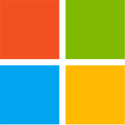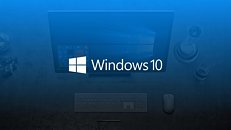
Intel CPU Shortages Could be Over, Hints Microsoft
Microsoft CFO Amy Hood in a quarterly financial results conference call with investors this Wednesday hinted that the worst could be over with Intel CPU shortages. "In Windows, the overall PC market was stronger than we anticipated, driven by improved chip supply that met both unfulfilled Q2 commercial and premium consumer demand as well as better-than-expected Q3 commercial demand." It's important to note that Hood did not name Intel, as PCWorld otherwise observed, but it's highly likely that she was referring to Intel, given that it continues to dominate pre-built notebook and desktop markets.
PCWorld uses Hood's statement from the previous quarter's results call to zero in on Intel. "The overall PC market was smaller than we expected primarily due to the timing of chip supply to our OEM partners, which constrained an otherwise healthy PC ecosystem and negatively impacted both OEM Pro and non-Pro revenue growth," she had said. Prices of 9th generation Core desktop processors in the retail channel appear to be normalizing, with the Core i5-9400 selling for $184 on Newegg, which is close to MSRP, its iGPU-devoid twin, the i5-9400F selling at a discounted price of $169; the overclocker-friendly i5-9600K selling for $264, and the i7-9700K at $409, which is a tiny $20 markup over MSRP.
PCWorld uses Hood's statement from the previous quarter's results call to zero in on Intel. "The overall PC market was smaller than we expected primarily due to the timing of chip supply to our OEM partners, which constrained an otherwise healthy PC ecosystem and negatively impacted both OEM Pro and non-Pro revenue growth," she had said. Prices of 9th generation Core desktop processors in the retail channel appear to be normalizing, with the Core i5-9400 selling for $184 on Newegg, which is close to MSRP, its iGPU-devoid twin, the i5-9400F selling at a discounted price of $169; the overclocker-friendly i5-9600K selling for $264, and the i7-9700K at $409, which is a tiny $20 markup over MSRP.










































